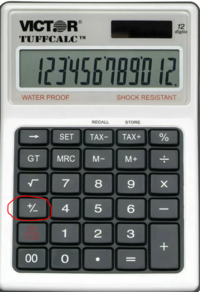Hi,
I am after some clarification on squaring negative values and the correct way to apply orders of operation...
I understand that [imath]-13 * -13 = 169[/imath] because multiplying a negative by a negative gives a positive value as the result.
However, I am confused about calculating [imath]-13^2[/imath], Logic tells me this should also be 169 as [imath]-13^2[/imath] seems to be the same as [imath]-13 * -13 = 169[/imath]. But if I think about the order of operations BODMAS or BIDMAS then I should calculate the [imath]13^2[/imath] before applying the negative value, so...
Step 1: Calculate the square of 13: [imath]13 * 13 = 169[/imath]
Step 2: Apply the negative, giving [imath]-169[/imath]
My Casio Calculator agrees that [imath]-13^2 = -169[/imath] (As does Google) (thus order of operation is being applied)
Every other reference (for example cuemath.com) I have read on the internet tells me that squaring negative values always gives a positive.
Is there a hidden rule states we should treat [imath]-13^2[/imath] as [imath](-13)^2[/imath] ?
So is it 169 or -169 that is the result of [imath]-13^2[/imath] ? And why?
I am after some clarification on squaring negative values and the correct way to apply orders of operation...
I understand that [imath]-13 * -13 = 169[/imath] because multiplying a negative by a negative gives a positive value as the result.
However, I am confused about calculating [imath]-13^2[/imath], Logic tells me this should also be 169 as [imath]-13^2[/imath] seems to be the same as [imath]-13 * -13 = 169[/imath]. But if I think about the order of operations BODMAS or BIDMAS then I should calculate the [imath]13^2[/imath] before applying the negative value, so...
Step 1: Calculate the square of 13: [imath]13 * 13 = 169[/imath]
Step 2: Apply the negative, giving [imath]-169[/imath]
My Casio Calculator agrees that [imath]-13^2 = -169[/imath] (As does Google) (thus order of operation is being applied)
Every other reference (for example cuemath.com) I have read on the internet tells me that squaring negative values always gives a positive.
Is there a hidden rule states we should treat [imath]-13^2[/imath] as [imath](-13)^2[/imath] ?
So is it 169 or -169 that is the result of [imath]-13^2[/imath] ? And why?




